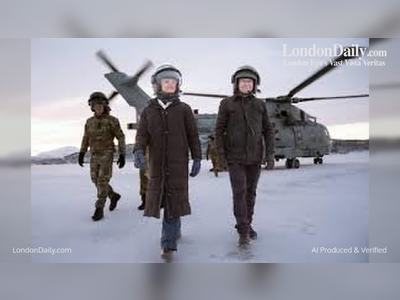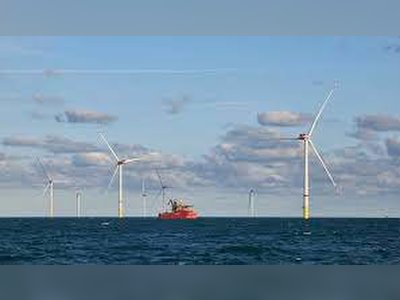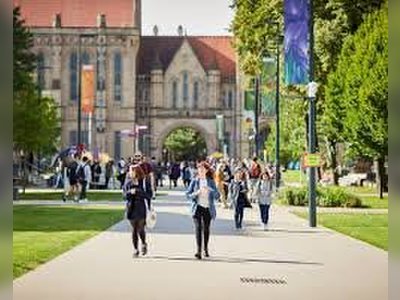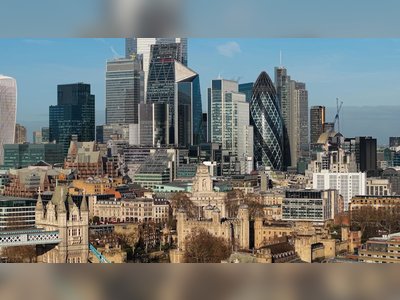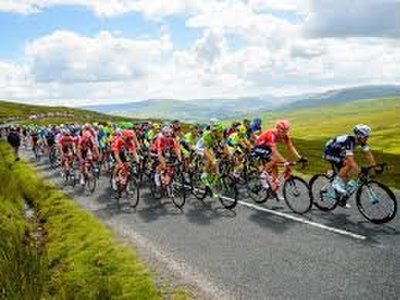Flamingos hatch on Tortola for the first time in over 70 years
This is according to the Marine Director at the H Lavity Stoutt Community College, Dr Lianna Jarecki who told BVI News she believes the chicks were hatched around late July into early August of this year.
She said the parents of the chicks are from Necker Island. They are said to occasionally travel to ponds at Josiah’s Bay or Belmont to feed before returning to the private island.
“This year in February/March, there were a lot of flamingoes in Josiah’s Bay pond. It was full and I live just where you can see Josiah’s Bay pond from the hill and I noticed that they started building nests. So they built about 12 nests and started laying eggs. But then the pond started drying up to nothing and then the flamingos started flying away. But they still had eggs on the nests,” Dr Jarecki said.
She added: “Before these rains, I got a call from the National Parks Trusts saying that someone had seen some tall grey birds walking around Josiah’s Bay. So I went down there and sure enough, they were three nearly-fledged flamingo chicks that were walking around, looking like they would start flying within a week or two. But they weren’t flying yet, so they had to be born at Josiah’s Bay pond.”
A mystery to their survival
Dr Jarecki said it is a mystery as to how the chicks survived the dry conditions without the presence of their parents since flamingo chicks are known to heavily rely on both parents for survival.
“No egg can hatch just sitting in the hot sun unattended by a parent and I don’t believe a chick can grow up without being attended by its flamingo parent,” the Marine Director explained.
“I myself have no idea as to how they managed to hatch and grow up unless they were some nests somewhere. I couldn’t see them, but they are very colonial nesters … It is a mystery to me how they managed to survive that pond drying up and all the adults leaving,” she added.
Reason believed for the laying on Tortola
When asked what is the likely reason behind the flamingos laying eggs at the Josiah’s Bay pond, Dr Jarecki said it may be linked to the disruption of their environment on Necker Island due to the recent construction activity.
“The Necker Island’s population — because the ponds are so small there — those birds tend to fly around looking for other ponds to feed or to nest. Also, they have been breeding there so there’s a lot there for such a small pond,” Dr Jarecki stated.
“I think what we discovered when we were trying to figure out why they nested here in the first place this year is that Necker Island was doing some construction near the pond and that was disturbing some of the flamingos, so that is probably why they went out looking for another spot in the first place,” she explained.
Disappearance in the 1940’s caused by hunting
Dr Jerecki also explained the reason behind the disappearance of the flamingos in the territory in the 1940s. She pointed to historical data which proves that flamingos once lived and bred on Tortola.
“Flamingos are native to the British Virgin Islands and throughout the Caribbean and the last recorded flamingos in the British Virgin Islands that were from the natural population disappeared in the 1940s. They were being hunted for sport and their eggs were collected and it left disturbance,” she said.
‘Flamingo Pond’
“There are some evidence that they nested on Tortola just from historical pond names like there’s a big pond at Cox Heath that was used as dump and filled in so you don’t even know there was a pond there anymore. But it was called Flamengo Pond and typically ponds are only called flamingo ponds if flamingoes bred there,” she further said.
Resurgence in the 1990’s
After a nearly 50-year absence of the flamingos in the territory, she said a collaborative effort was made to revive their population in the 1990s.
She said Guana Island WildLife Sanctuary partnered with the Bermuda Aquarium and Zoo and the National Parks Trust and imported eight flamingoes to do what she described as ‘a test run’ in the 1990.
“They did all right. Then in 1991, that’s when they brought 20 flamingos in … and those 20 were released into the wild on Anegada.”
Flamingos are protected by the Commission for International Trade of Endangered Species (CITES) so Dr Jerecki said the birds brought into the territory in the nineties needed to have been born in a zoo to be legally allowed to enter the territory’s borders.
Additionally, she said that once transported from the Bermuda Aquarium and Zoo, they could not have landed in another country before arriving in the BVI, or they would have been protected under CITES and therefore forbidden entry into the territory.
The birds had, therefore, been flown into the BVI via a private jet.







